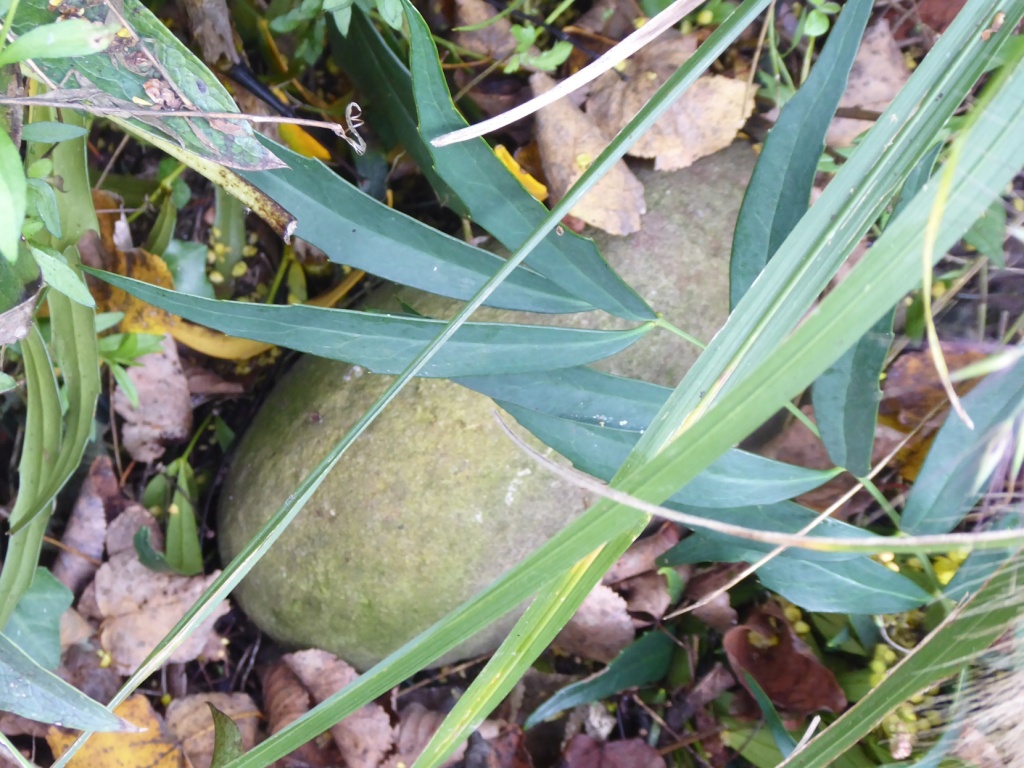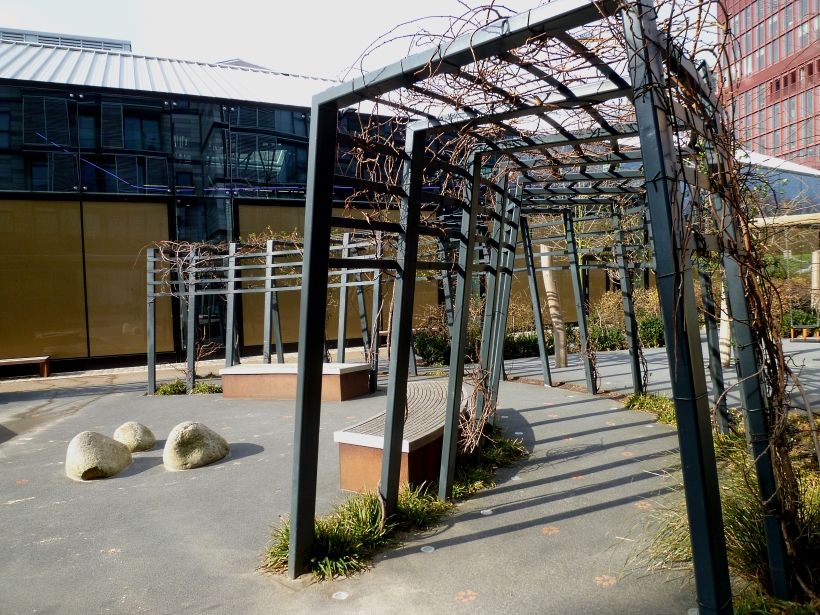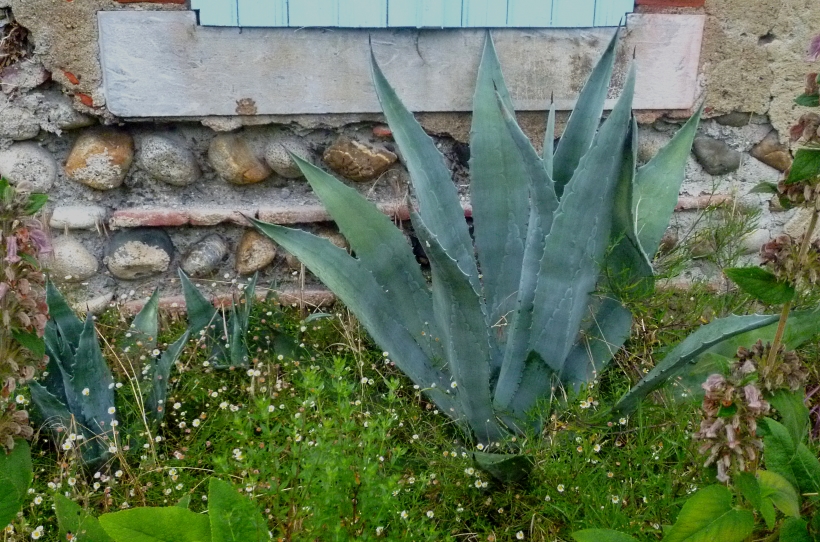
I probably spend more time looking at and researching plants than I do buying them, planting, propagating them or gardening with them- if I am honest. I was reminded of this on reading the latest instalment of Dan Pearson’s blog about creating his new sand garden at his home. Some gardeners who write have a very florid style, maybe in my own small way I do! But Dan Pearson is a thoughtful, honest and very straightforward blog writer, whose intention, it seems to me, is to convey the whole truth about the way that he gardens and why. I love the calmness of it, and the acceptance that knowledge is no guarantee of perfection. Once a plant is taken into our world, we can’t know exactly how it will react or behave. We take knowlege on trust, but there is always chance- and risk, not neccessarily in balance either.
But it is still worth developing knowledge and learning from experience and the stories of other gardeners. Very much so. What helps me is watching what happens and deciding if intervention is needed – or not. Sometimes time is all that’s needed. Take my Agave americana in the front garden, on the stony, garrigue-inspired slope. It is a baby of my original Agave in Tostat, given by a friend in the Languedoc. So, I planted it only 3 years ago, and already it is more than 1.5m tall and wide, with several offspring plants nestling nearby. It clearly likes it. I have done nothing except watch and wait.

It’s the same story with my groundcover planting of Achillea crithmifolia. Three years ago, planting out my still baby Koelreuteria paniculata ‘Coral Sun’ and not far away, a new baby Rosa x odorata ‘Mutabilis’, I wanted to protect them from the miles of marauding bramble and bindweed that we were attacking with vigour. Reading about the use of allelopathic plants, those that secrete substances that deter other competing plants, I picked Achillea crithmifolia as low growing, aromatic, feathery foliage plant that does brilliantly in tough conditions. I had tried it out in Tostat in a limited area,a nd had been impressed, as well as liking the Achillea as a plant in its own right. I think I started off with eight plants in a ring round the rose and the tree. Three years later, you can see how well it has gently carpetted the area, giving the tree and the rose room to grow.
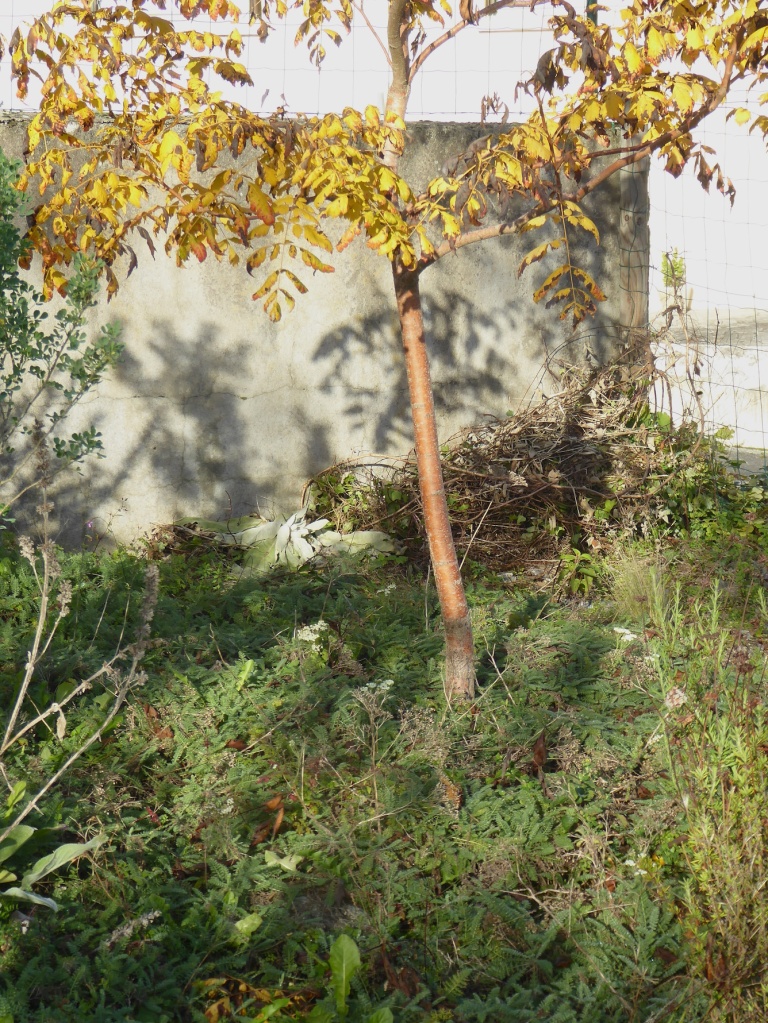
It also has spread considerably, which I am really enjoying, though that might be a drawback to consider if you have limited space. The Achillea doesn’t seem to bother the lovely floppy velvety leaves of Stachys byzantina ‘Big Ears’ either. It is not widely available in the UK, but is really worth a try. Dan Pearson is doing the same with it in his new garden, see the blog article above.
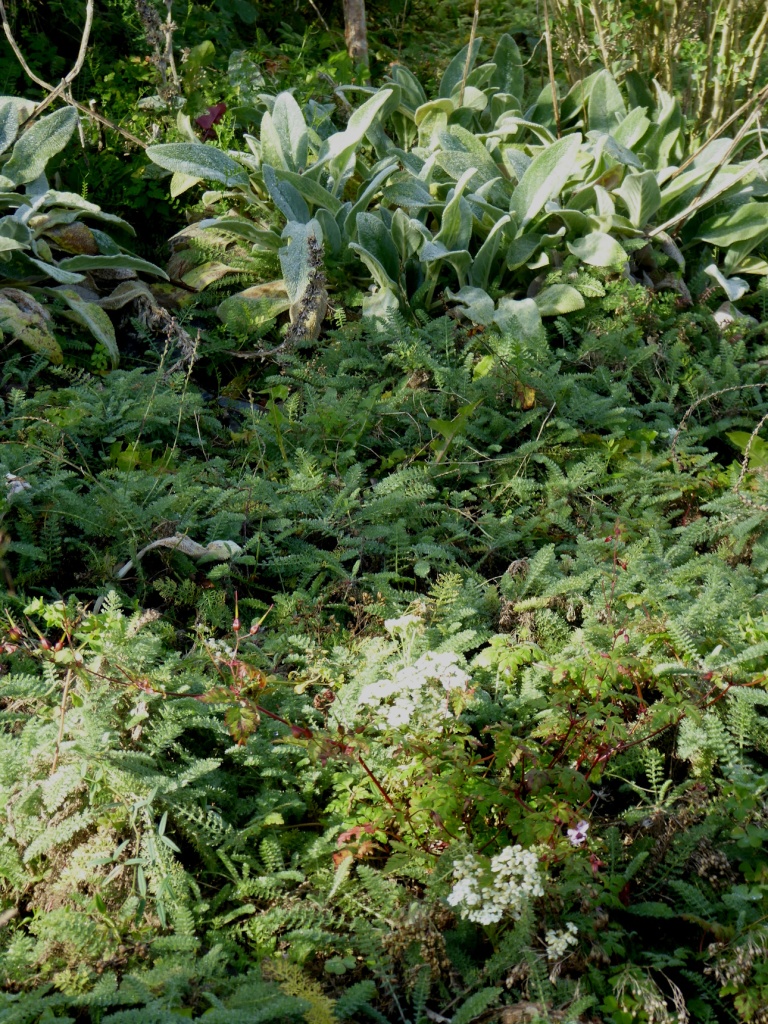
Some plants love where they have been planted so miuch that they really go mad. This would be true of what I bought as a charming, small leaved Phlomis, Phlomis lanata ‘Pygmy’. The clue was in the name, I thought, and so it was for the first 2 years, a very sweet little hummock of Phlomis. It is still very sweet, but is breaking the 1m barrier in every direction and shows no sign of slowing down.
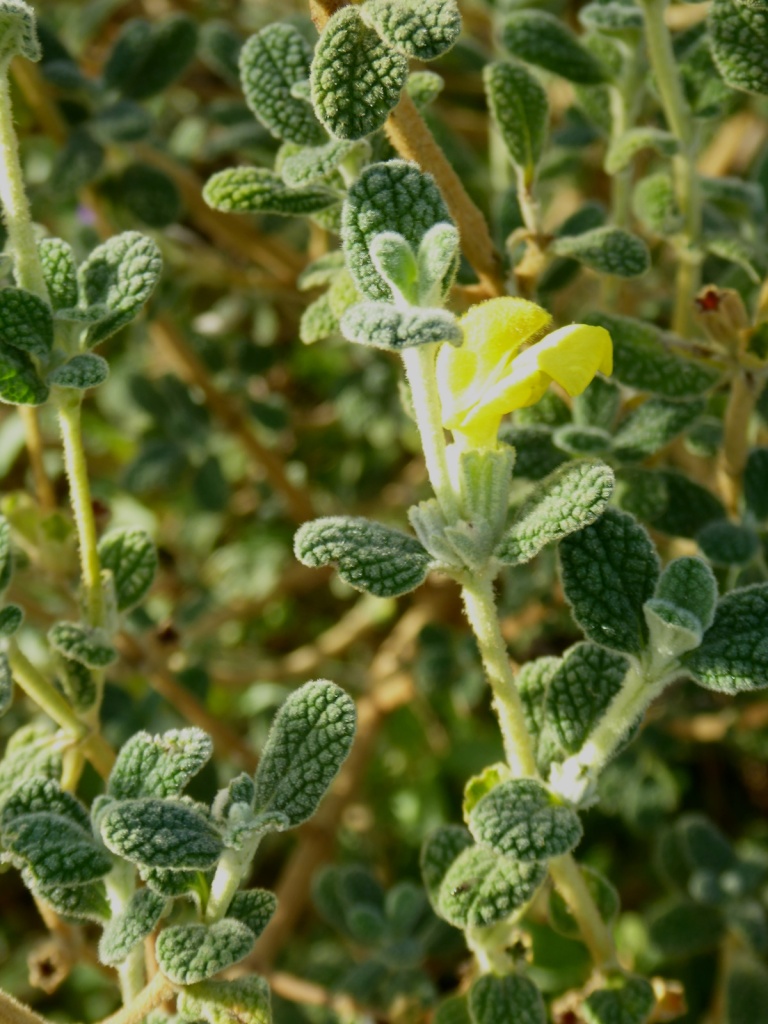
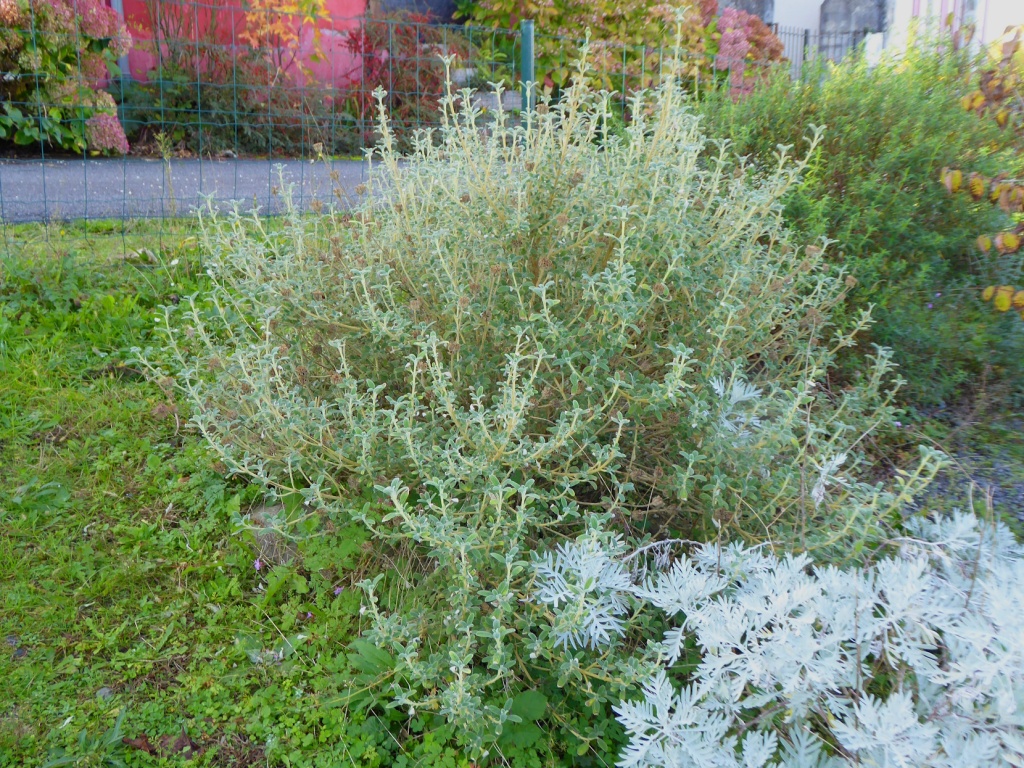
Our conditions can be quite harsh, hot sun, little rain for long periods and damp, even wet winters into Spring. I had taken three small cuttings of Hydrangea quercifolia from the Tostat garden, and they have been slow to get going, with not much happening for the first two years. But they are clearly well rooted in now to our stony soil, and this year looks to be the making of them. I love them even more for the effort.

In the Barn Garden, another plant that I have watched and waited for is Fatsia polycarpa ‘Green Fingers’. It was a newish introduction so there wasn’t a lot of information about it three years ago. And it did struggle getting into the shady, poor soil spot that I had put it in. But, three years on, this has been the year when it has turbo charged itself, and is now taller than the companion Mahonia with very cumbersome name, Mahonia eurybracteata subsp. ganpinensis ‘Soft Caress’ next to it. It has a wonderful form, with tiers of arching, jazz hands leaves in a good green.
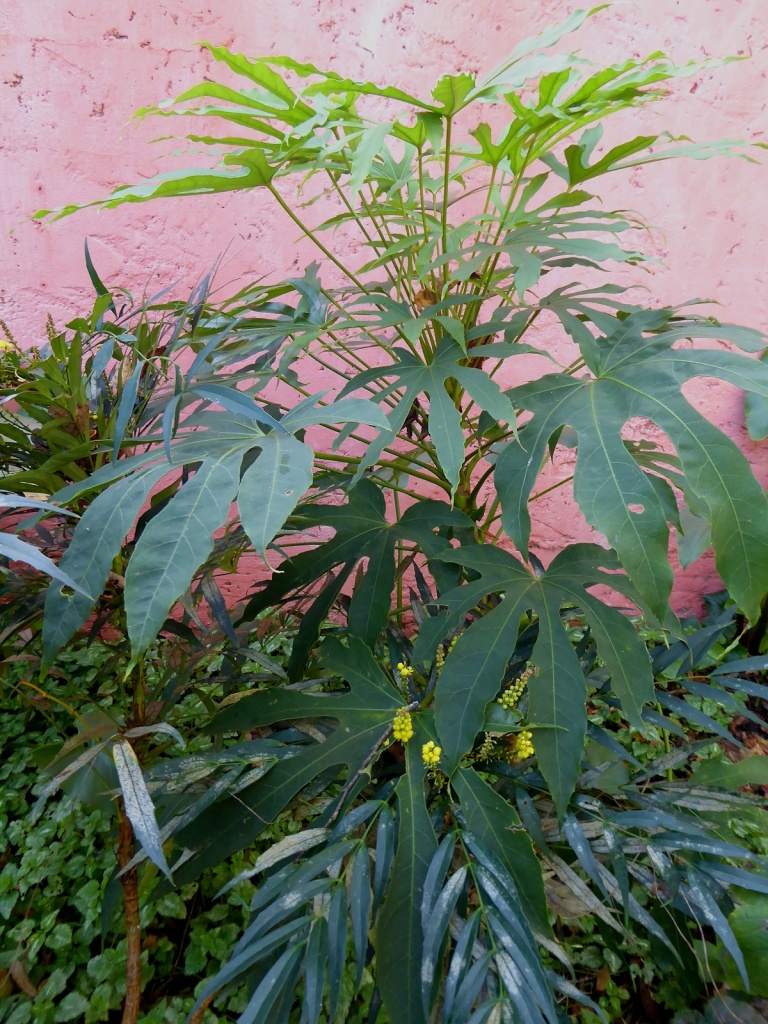
I tried to buy another ‘Green Fingers’ last year but couldn’t find one, so went for the more usual variety, ‘Spider’s Web’. This is in a worse spot soil-wise, but a better spot light-wise, and seems to have gone for the big spread look in one year only. I quite like that it’s not too creamy at the edges.
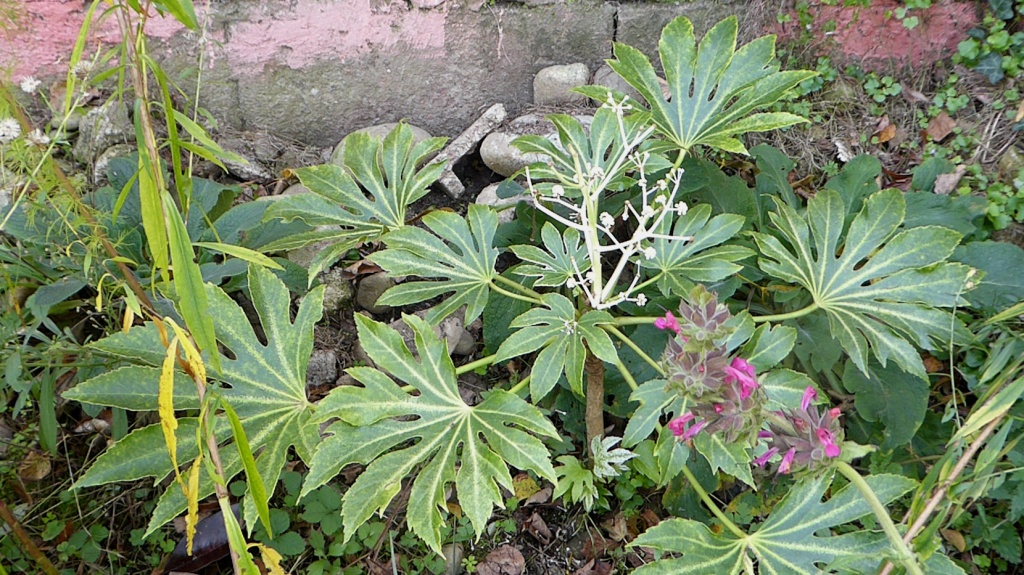
Now this is a vital stone. Last winter I noticed that a low branch of Mahonia ‘Soft Caress’ was brushing the ground, so just thought I would have a go at getting that branch to root by weighing it down with a stone. Nine months later, the Assistant Gardener went home with a rooted cutting which should make a bonny plant in a few more months. So I am having another go with the vital stone.
Time, chance and a bit of knowledge combined.
